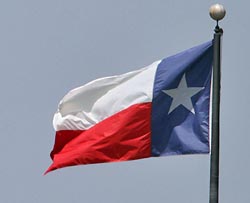 |
The
last week in April 2014 was primarily a birding trip to east Texas —
mostly High Island — but we looked for odes when we could. Greg Lasley
had graciously provided good directions — including maps and GPS — to
three east Texas locales. We only managed to get to two of these during
the time we had available, but it was fun to encounter new Odonata. We
saw a few reptiles by simply dumb luck. We did see unidentified frogs
and turtles, but didn't get any photos of them.
ODONATA Dragonflies and damselflies |
|
 We
first saw odes we could identify on 25 April, enroute to the
Independence Monument at San Jacinto SHP — where Texans won a battle
over the Mexicans on 21 Apr 1836 to become independent. [Texas would
apply to join the United States thereafter, and became a State in
1845]. We saw odes in flight over the field to the right while driving
up this road. We stopped and saw: We
first saw odes we could identify on 25 April, enroute to the
Independence Monument at San Jacinto SHP — where Texans won a battle
over the Mexicans on 21 Apr 1836 to become independent. [Texas would
apply to join the United States thereafter, and became a State in
1845]. We saw odes in flight over the field to the right while driving
up this road. We stopped and saw:
-
Red Saddlebags Tramea onusta — one [i.d. presumptive on habitat & very red coloration]
-
Black Saddlebags Tramea lacerata – a few
-
Wandering Glider Pantala flavescens — many
These are common species in southern California, so all were familiar to us. |
| |

Greg
Lasley had given us good directions to several sites in Sam Houston NF,
and the best was Big Creek Scenic Area. We visited on 26 April. This is
a photo of Big Creek — a rather tiny stream from our perspective —
running through east Texas pine woods and swamplands. The spectacular
Ebony Jewelwing (see below) was quite abundant along this sluggish
stream. Using Greg's directions we took an hour's walk down a gated,
overgrown road, hoping mostly for Arrowhead Spiketail, Gray Petaltail,
and clubtails. Perhaps because the day was overcast and not very hot,
there were fewer dragons than hoped. We dipped on the 'most wanted'
species but found a half-dozen clubtails of two species. These
clubtails we about the size of Pacific Clubtail in California... and
here we had thought everything would be bigger in Texas! |
Ebony Jewelwing
Calopteryx maculata
[males]
A
gorgeous critter (as is River Jewelwing in northern California) that
sits with wings closed — it is really hard to get a snap when the wings
were open (this is my only successful effort at that; fight).
|
|
Blue-tipped Dancer
Argia tibialis
[male]
A
very snappy Dancer but a bit elusive for photos — this shot of male is
from Shepherd later in the day, as I took only females at Big Creek.
Damselflies are tiny, and this one is posted here at 4X life size.
|
|
Common Green Darner
Anax junius
[imm male?]
We
thought this was something really good (Comet Darner?) in the field but
later, in the motel with field guides, the "bull's eye" atop the frons
apparently means this is just A. junius — a widespread darner
across North America and very common where we live in California.... A
real let-down, unless Greg Lasley bails us out with a better i.d. . . .
|
|
Ashy Clubtail
Gomphus lividus
We
found a few of these quite small, rather dingy, and clubless clubtails.
It is shown about 2.5X life size here. The thorax is extensively brown,
and there is only a minimum of yellow on the dorsal edge of the 'club.'
We think this makes this Ashy Clubtail, but needs confirmation.
|
|
Oklahoma Clubtail
Gomphus oklahomensis
We
also had at least two of these somewhat brighter clubtails, with a bit
more of a 'club' and much yellow on the dorsal side of the 'club.'
There is a very thin line separating the upper thorax brown area into
two parts, and green thoracic stripes are wider.
|
|
Dot-winged Baskettail /
Slender Baskettail
Epitheca petechialis/costalis
Small
dragons in family Corduliidae (Emeralds) were flying over Big Creek.
The photo is a luck shot looking straight down from a bridge. The shot
seemed to match photos of blue-eyed Selys' Sundragon in Beaton (2007)
and not like the photos there of brown-eyed baskettails. We were
initially excited because it would be a new 'late date' in Texas.
Alas, our claim was immediately debunked by Greg Lasley and Dennis
Paulson, who opined it was one of the baskettails. Dot-winged may be
more likely on range; east Texas Dot-wings lack wing dots.
|
|
Eastern Pondhawk
Erythemis simplicicollis
[female]
The
eastern equivalent of our widespread Western Pondhawk in California.
Both of the closely-related species are green-faced in males and
females. Eastern females, though, have a heavily banded black-and-white
central abdomen — something not seen in the West.
|
|
Common Whitetail
Plathemis lydia
[female]
A
very common North American libellid; this shows a nicely camouflaged
female. Males were seen at almost all locales visited.
|
|
|
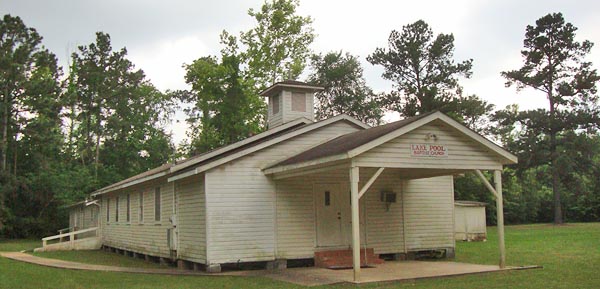
Big
Creek had been pleasant, but the day was overcast and Greg's trail had
not been as "odey" as we had anticipated. [We had also tried Double
Lake but it was nearly dry, and the only ode identified was Common
Whitetail.] So we tried a couple of spots around the town of Shepherd,
including the forest by Lake Pool Baptist Church. A couple of
previously seen odes posed for better shots here. Nearby Lake
Run-a-Muck had lilypad habitat for these species: |
Blue Dasher
Pachydiplax longipennis
[male]
Very
common here and actually encountered at most odeing spots visited. It
is widespread in North America and also very common in California,
although my impression is that "our" dashers averaged a bit larger than
those seen here in Texas in spring.
|
|
Rambur's Forktail
Ischnura ramburii
[male]
An
exceptionally widespread species in the southern U.S. (including s.
CA), but colorful. The red dots on belly are water mites. This is a
very tiny damsel and is shown here about 5X life size.
|
|
Lilypad Forktail
Ischnura kellicotti
[distant male, closer female]
A
nice southeastern endemic we had hoped to see. The blue males were far
away (near photo) but one very colorful female was closer. All were
perched on lilypads, and had the odd behavior of the tip of the abdomen
drooped down to nearly touch the surface of the lilypad.
|
|
|
|
| |

Apart
from a few Wandering Gliders, we did not see many odonates while
birding at High Island. We did, however, find one that we had expected
to see (per Greg Lasley's tips) along the Gulf Coast — this was at the
Sabine Pass Civil War Battlefield on the Texas side of the TX-LA
border, where the Sabine River enters the gulf. It was an interesting
historic spot and yielded this species: |
Seaside Dragonlet
Erythrodiplax berenice
['black morph' female]
A
very snazzy dragon that occurs in coastal salt marshes from east Texas
and up the Atlantic coast to Nova Scotia. We had previously seen it
near Cape Cod, MA. According to Paulson (2009, 2011), females come in
black or striped morphs.
|
|
|
| |
 On
our final day (29 Apr) we headed towards the Houston airport, but spent
a couple of very productive mid-day hours at a boggy swamp in the Lance
Rosier unit of Big Creek National Preserve, near Sarasota. At the site
(another Greg Lasley tip) the swampland had breeding Prothonotary and
Swainson's Warblers, so we got distracted by birds (e.g., Prothonotary,
just below), but managed to find these odonates: On
our final day (29 Apr) we headed towards the Houston airport, but spent
a couple of very productive mid-day hours at a boggy swamp in the Lance
Rosier unit of Big Creek National Preserve, near Sarasota. At the site
(another Greg Lasley tip) the swampland had breeding Prothonotary and
Swainson's Warblers, so we got distracted by birds (e.g., Prothonotary,
just below), but managed to find these odonates:
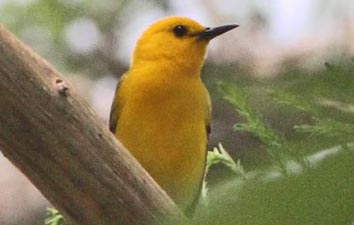
|
Citrine Forktail
Ischnura hastata
[imm female?]
A
really really tiny damsel – and colorful — but we guess this is the
species. Alas, it is a widespread southern species (including southeast
CA), and we were hoping for something new . . .
|
|
Cyrano Darner
Nasiaeschna pentacantha
[male]
This
blue-eyed darner was flying short patrol beats rather low over the
water (at the spot shown above), and I managed only a poor flight shot.
It is apparent that the green and brown pattern on thorax is jagged,
which is one reason I lean toward Cyrano Darner. Needs confirmation.
|
|
Eastern Amberwing
Perithemis tenera
[male]
This
tiny libellid is less than an inch long, so is actually shown about
life-size here. Males were cruising just over the water but rarely
perched, except on this single log some distance away. This was an easy
ode for us as it is quite similar to Mexican Amberwing from southern
California.
|
|
Slaty Skimmer
Libellula incesta
[imm male]
This
large young skimmer was impressive but gave us i.d. problems. After
consulting Beaton (2007) and Paulson (2009), we thought, based on dark
face and length of 'ear' on 'wolf's head' thoracic pattern,
"Bar-winged" but Dennis Paulson corrected it to Slaty. This is
apparently a new early date for Texas (by 4 days).
|
|
Bayou Clubtail
Arigomphus maxwelli
[male]
This
was the dragon that we most wanted in Big Creek Preserve, since Greg
Lasley had emphasized this was a special spot for it. It took over an
hour to find, even though we looked right at its muddy shore right
away, as it is small and surprisingly inconspicuous. Rita spotted one
of perhaps 2-3 males seen first, but they were flighty and took some
time to get close enough for photos. Really a nice clubtail up close,
with blackish 'club' contrasting with yellow appendages.
|
|
Stream Cruiser
Didymops transversa
[male]
the one that got away . . .
|
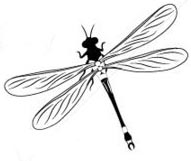 A
largish club-tailed dragonfly was flying a beat over a bayou slough
when we arrived, but it did not remain long and I did not get a chance
for a photo. It very much reminded me of Western River Cruiser — I
helped find and document the first record for Monterey Co., CA; that
ode was also initially found in flight (but then netted & photo'd)
— except this "cruiser" was dark brown, not black. It was perhaps 2-3
feet off the water surface in flight. Photos of Stream Cruiser (Beaton
2007, Paulson 2009, 2011) match my impressions well, and are in habitat
and in season, but without a photo, it basically "got away" . . . A
largish club-tailed dragonfly was flying a beat over a bayou slough
when we arrived, but it did not remain long and I did not get a chance
for a photo. It very much reminded me of Western River Cruiser — I
helped find and document the first record for Monterey Co., CA; that
ode was also initially found in flight (but then netted & photo'd)
— except this "cruiser" was dark brown, not black. It was perhaps 2-3
feet off the water surface in flight. Photos of Stream Cruiser (Beaton
2007, Paulson 2009, 2011) match my impressions well, and are in habitat
and in season, but without a photo, it basically "got away" . . . |
|
HERPS
in this case, Reptiles (no amphibians were specifically identified) |
Green Anole
Anolis carolinensis
[male in display]
Seen
most days at Smith Oaks reserve, High Island (this photo), and also in
Big Thicket National Preserve. Caught the male in the sun during an
early morning display of pink throat fan.
|
|
Eastern Coral Snake
Micrurus fulvius
not photo'd
|
 Unfortunately
this fabulous snake got away before I could get a snap of it. It was at
the edge of gated forest track in Big Creek Scenic Area, Sam Houston
NF, during an overcast afternoon. Rita spotted it slithering towards
the woods and got me on the perhaps 18-20 inch thin snake. With its
colorful rings, it was immediately apparent that it was a coral snake
or mimic. I saw long dark red and long black rings separated by very
narrow yellow rings — an obvious coral snake. I've seen other species
of coral snake in the tropics before but this was a first in the U.S.
for us. Unfortunately
this fabulous snake got away before I could get a snap of it. It was at
the edge of gated forest track in Big Creek Scenic Area, Sam Houston
NF, during an overcast afternoon. Rita spotted it slithering towards
the woods and got me on the perhaps 18-20 inch thin snake. With its
colorful rings, it was immediately apparent that it was a coral snake
or mimic. I saw long dark red and long black rings separated by very
narrow yellow rings — an obvious coral snake. I've seen other species
of coral snake in the tropics before but this was a first in the U.S.
for us.
|
American Alligator
Alligator mississippiensis
[smallish subadult in photo]
Seen daily at large pond at Smith Oaks, High Island, including some rather large adults basking along the shore at times.
|
|
|
| |
Literature cited:
Beaton, G. 2007. Dragonflies and Damselflies of Georgia and the Southeast. Univ. of Georgia, Athens, GA.
Paulson, D . 2009. Dragonflies and Damselflies of the West. Princeton Field Guide series. Princeton, N.J.
Paulson, D . 2011. Dragonflies and Damselflies of the East. Princeton Field Guide series. Princeton, N.J.
|
TOP
Page created 19-20 May 2014 |
|

 We
first saw odes we could identify on 25 April, enroute to the
Independence Monument at San Jacinto SHP — where Texans won a battle
over the Mexicans on 21 Apr 1836 to become independent. [Texas would
apply to join the United States thereafter, and became a State in
1845]. We saw odes in flight over the field to the right while driving
up this road. We stopped and saw:
We
first saw odes we could identify on 25 April, enroute to the
Independence Monument at San Jacinto SHP — where Texans won a battle
over the Mexicans on 21 Apr 1836 to become independent. [Texas would
apply to join the United States thereafter, and became a State in
1845]. We saw odes in flight over the field to the right while driving
up this road. We stopped and saw: 

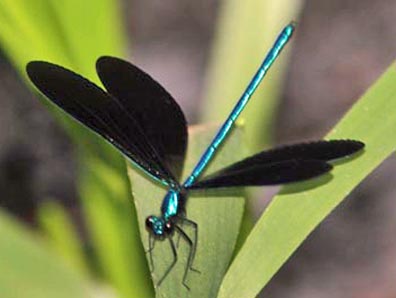
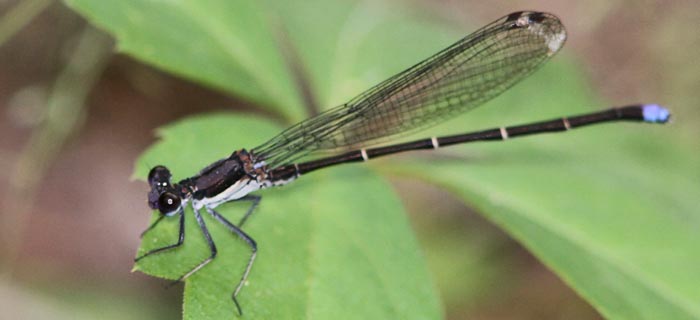
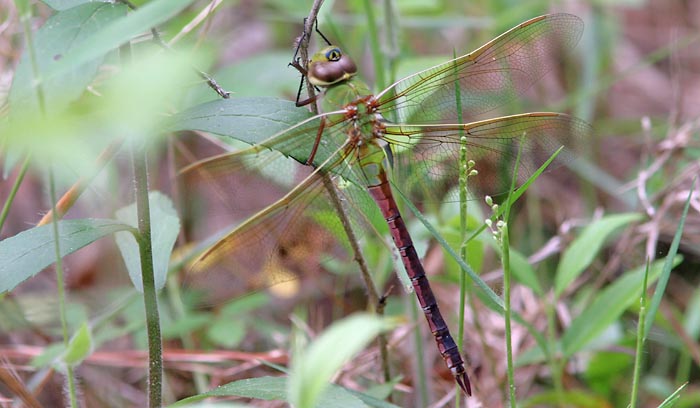


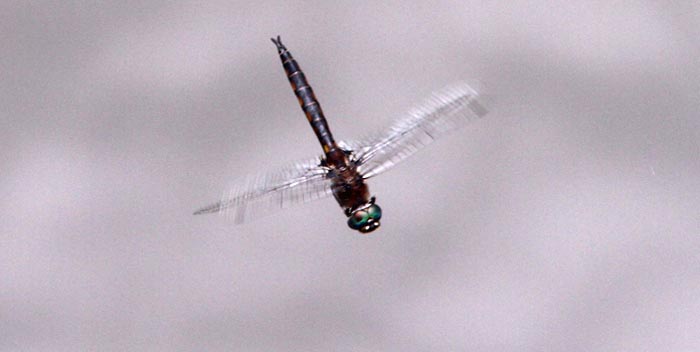
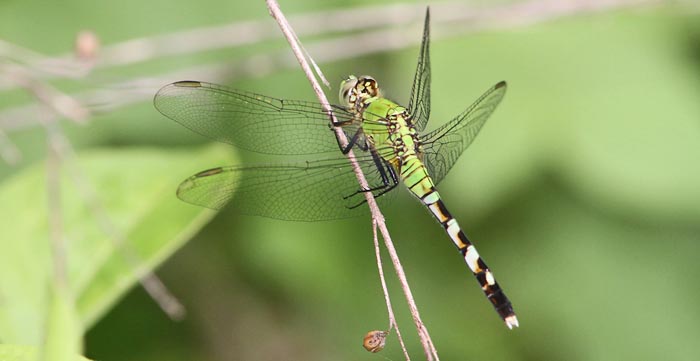


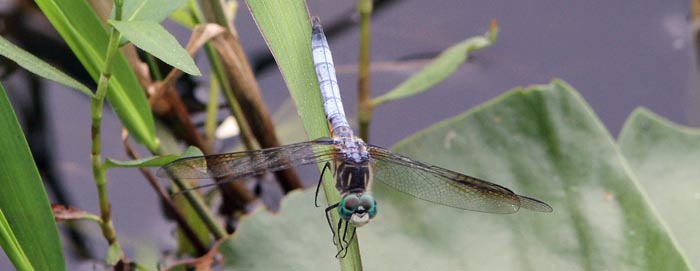

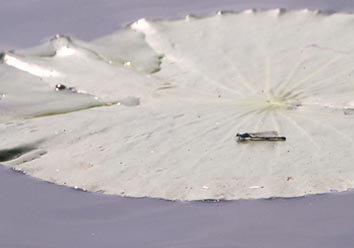
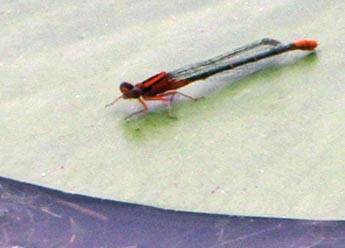


 On
our final day (29 Apr) we headed towards the Houston airport, but spent
a couple of very productive mid-day hours at a boggy swamp in the Lance
Rosier unit of Big Creek National Preserve, near Sarasota. At the site
(another Greg Lasley tip) the swampland had breeding Prothonotary and
Swainson's Warblers, so we got distracted by birds (e.g., Prothonotary,
just below), but managed to find these odonates:
On
our final day (29 Apr) we headed towards the Houston airport, but spent
a couple of very productive mid-day hours at a boggy swamp in the Lance
Rosier unit of Big Creek National Preserve, near Sarasota. At the site
(another Greg Lasley tip) the swampland had breeding Prothonotary and
Swainson's Warblers, so we got distracted by birds (e.g., Prothonotary,
just below), but managed to find these odonates: 
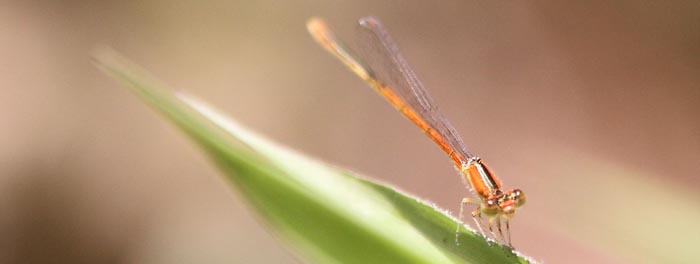
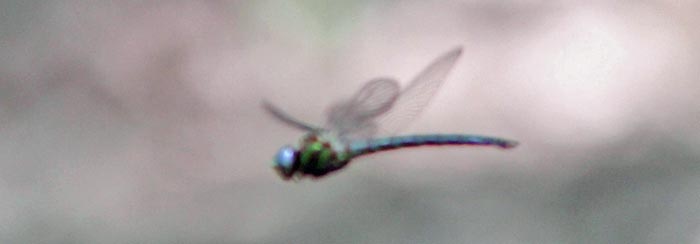


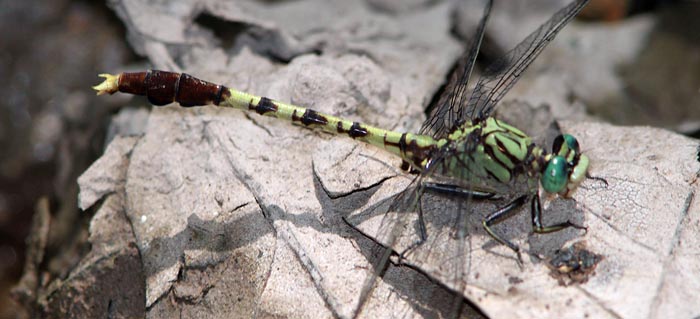
 A
largish club-tailed dragonfly was flying a beat over a bayou slough
when we arrived, but it did not remain long and I did not get a chance
for a photo. It very much reminded me of Western River Cruiser — I
helped find and document the first record for Monterey Co., CA; that
ode was also initially found in flight (but then netted & photo'd)
— except this "cruiser" was dark brown, not black. It was perhaps 2-3
feet off the water surface in flight. Photos of Stream Cruiser (Beaton
2007, Paulson 2009, 2011) match my impressions well, and are in habitat
and in season, but without a photo, it basically "got away" . . .
A
largish club-tailed dragonfly was flying a beat over a bayou slough
when we arrived, but it did not remain long and I did not get a chance
for a photo. It very much reminded me of Western River Cruiser — I
helped find and document the first record for Monterey Co., CA; that
ode was also initially found in flight (but then netted & photo'd)
— except this "cruiser" was dark brown, not black. It was perhaps 2-3
feet off the water surface in flight. Photos of Stream Cruiser (Beaton
2007, Paulson 2009, 2011) match my impressions well, and are in habitat
and in season, but without a photo, it basically "got away" . . . 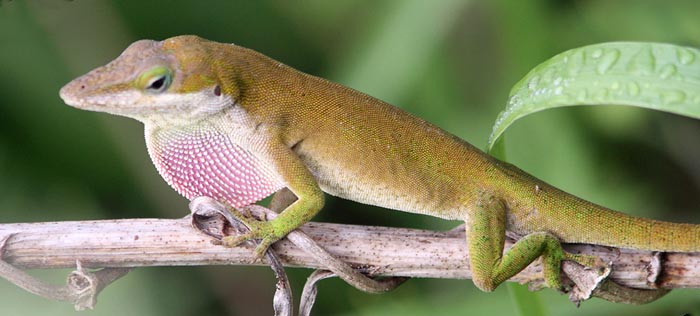
 Unfortunately
this fabulous snake got away before I could get a snap of it. It was at
the edge of gated forest track in Big Creek Scenic Area, Sam Houston
NF, during an overcast afternoon. Rita spotted it slithering towards
the woods and got me on the perhaps 18-20 inch thin snake. With its
colorful rings, it was immediately apparent that it was a coral snake
or mimic. I saw long dark red and long black rings separated by very
narrow yellow rings — an obvious coral snake. I've seen other species
of coral snake in the tropics before but this was a first in the U.S.
for us.
Unfortunately
this fabulous snake got away before I could get a snap of it. It was at
the edge of gated forest track in Big Creek Scenic Area, Sam Houston
NF, during an overcast afternoon. Rita spotted it slithering towards
the woods and got me on the perhaps 18-20 inch thin snake. With its
colorful rings, it was immediately apparent that it was a coral snake
or mimic. I saw long dark red and long black rings separated by very
narrow yellow rings — an obvious coral snake. I've seen other species
of coral snake in the tropics before but this was a first in the U.S.
for us. 